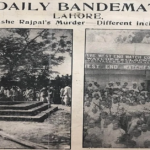The death of former Japanese Prime Minister Shinzo Abe is an immense loss for Japan as well as India. He came from a political background, being the grandson of legendary Prime Minister Nobusuke Kishi and the son of former Foreign Minister Shintaro Abe. Shinzo Abe was in his early 50s when he first became the Prime Minister, considered to be a relatively young age for the top post in Japan. He quit within a year for health reasons, which rarely happens in Japan. And later, he came back as the PM for two terms as the leader of the ruling Liberal Democratic Party (LDP), making him the longest-serving post-war Japanese PM. He won the elections in 2012, 2016 and 2020 before quitting suddenly, again on health grounds.
After his retirement, former PM Abe remained the head of a powerful Japanese faction and was campaigning in Nara for the Upper House polls, due on July 10. In those elections, if the Liberal Democratic Party and its partners secure two-thirds majority, an amendment to the Constitution, particularly Article 9, which restricts Japan’s defence exposure, could be possible. He recently agreed to be the chairman of the India-Japan Association. India will miss Abe sorely because even out of power, he was a dependable friend and supporter of the country in Japan and across the region.
After Abe stepped down, the stop-gap Prime Minister was Yoshihide Suga. Significantly, Abe did not push his own faction for leadership of the LDP last year, but backed Fumio Kishida, who served as foreign minister during Abe’s tenure and was the leader of another party faction. Kishida became the PM as well as the LDP chief last year. This was because Kishida agreed to abide by Abenomics, Abe’s outlook for Japan, which includes giving the nation greater economic heft, increasing defence spending, making Japan a part of regional alliances, not shirking military responsibility and expanding its relationship with India and Australia in particular.
Abe visited India four times, the most by any Japanese PM — in 2007 during his first term and subsequently in his second term in 2014 as the chief guest at the Republic Day function, then in 2015 and 2017. He was scheduled to visit India for a summit in 2020 in Guwahati, but that could not take place. Abe’s last meeting with PM Modi was on May 24 this year on the sidelines of the Quad summit in Tokyo.
In 2007, Abe spoke in the Indian Parliament about the confluence of the two oceans, the Indian and Pacific. From his perspective, this was necessary to enlarge Japan’s view because traditionally, Japan’s concept of the Asia- Pacific stalled at Myanmar and India was thereafter treated separately. The confluence of the two oceans brought India into Japan’s larger Asian purview. This later became the harbinger of the Indo-Pacific concept, which by 2012, merited greater attention from the East Asia Summit due to China’s aggressive intent in the South and East China Seas. In 2015, Abe and Modi upgraded the relationship to a Special Strategic and Global Partnership. In 2021, the Padma Vibhushan was conferred on Abe.
The confluence of India and Japan over the Indo-Pacific led to a strengthening of the Malabar exercises, closer defence cooperation and the revitalisation of Quad.
Like India, Japan under Abe navigated the Trump years with trepidation but with success. In the Biden period, the Abe vision worked well. Quad, which Abe had been a part of in an earlier avatar, has now become a cohesive entity. Credit goes to Abe for his vision of the Indo-Pacific which brought closer functional and defence cooperation through a common strategic vision between India, Japan, Australia and the United States.
Under Abe, there was a concerted attempt by Japan to enhance economic engagement with India. India became the largest recipient of Japanese ODA (official development assistance), which rose to about $4 billion per annum. Abe sought more Japanese investment in India and prior to his aborted visit in 2020 a strategic plan for investing in India was crafted. This asked Japanese companies to aggregate their plans despite Covid-19, for the next five years, and implement them assiduously with India. Abe directed METI (Ministry of Economy, Trade and Industry) to explore business opportunities in India and use government funding to build capacities in India so that such investment plans could work and achieve their strategic objectives.
Abe’s terms saw Japan become India’s most reliable economic partner. The Shinkansen project, visionary and high profile in its scope, became a symbol of how Japan viewed India as part of its regional partnerships.
In Abe’s time, the defence papers and the nascent national security strategy started speaking about India clearly and to work with India with determination to maintain regional peace and stability. India and Japan were close partners in the East Asia Summit and in dealing with ASEAN. In fact, Japan was most vociferous in trying to retain India in the Regional Comprehensive Economic Partnership (RCEP). And when India withdrew, Japan was most disappointed as under Abe, it wanted India in the RCEP to counterbalance China. Despite the withdrawal of India from RCEP, the Japanese view of strategically engaging India in the economic sphere led to the supply chain resilience initiative between Japan, Australia and India, on which discussions continue. India’s inclusion in IPEF (Indo-Pacific Economic Framework) owes much to Abe’s legacy of including India.
After his retirement, Abe remained the head of a powerful Japanese faction and was campaigning in Nara for the Upper House elections due on July 10. In those elections, if the LDP and its partners secure two-thirds majority, an amendment to the Constitution, particularly Article 9, which restricts Japan’s defence exposure, could be possible. Article 9 states that “the Japanese people forever renounce war as a sovereign right of the nation and the threat or use of force as means of settling international disputes.” It adds that the “right of belligerency of the State will not be recognised.”










More Stories
Why are right-wing parties winning the European Union elections?
Why is the weather pattern changing in countries around the world?
Electoral Bonds: A Veiled Gateway to Legal Corruption